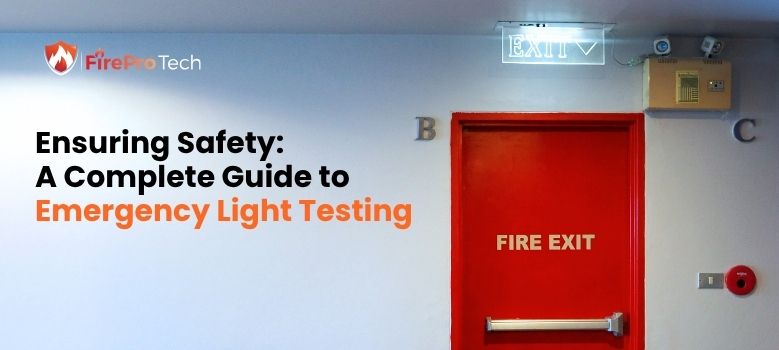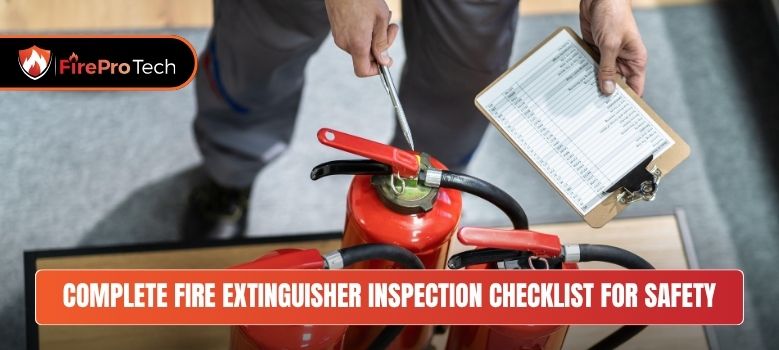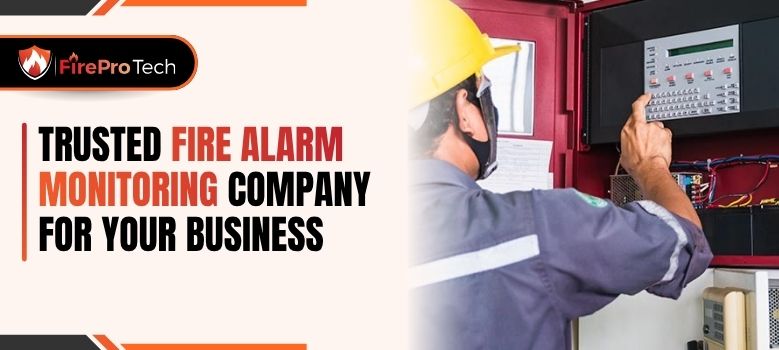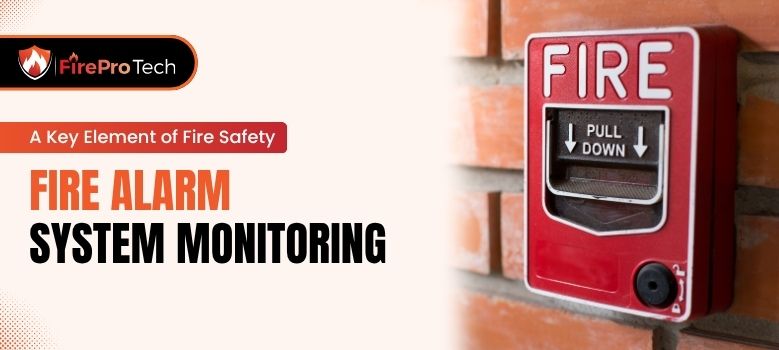
When an emergency strikes, every second counts. The path to safety must be unmistakable and illuminated, guiding people out of danger quickly and calmly. Emergency lighting is the often-overlooked lifeline that makes this possible. Whether it’s a sudden power outage, a fire alarm, or another crisis, having reliable emergency lighting can mean the difference between order and chaos. Yet, too many property owners and managers neglect the regular checks that ensure these lights are ready to perform when needed most.
In this guide, we will walk through everything you need to know about keeping your building safe with consistent emergency light testing. From understanding why this testing matters to the specific requirements and best practices, you’ll find practical steps to protect your occupants, your assets, and your peace of mind. Because safety doesn’t happen by accident—it takes preparation, diligence, and a commitment to doing things right.
Emergency lighting is more than just a backup system. It’s a critical part of every building’s safety infrastructure, designed to keep people safe in moments of uncertainty. That’s where emergency light testing becomes essential—not only to meet legal requirements but also to ensure everyone inside your building is protected if the unexpected happens.
The main goal of emergency light testing is to confirm that all emergency lights will function properly during a real emergency. Power failures, fires, or other hazards can leave people in the dark, literally and figuratively. With regular emergency light testing, you are not leaving safety to chance. Instead, you’re proactively checking that your exit signs and emergency lighting systems are operational and will guide occupants to safety if primary power fails.
Across most regions, building codes and fire safety regulations make emergency light testing a legal requirement. These rules exist because emergency lighting must always be dependable. Authorities expect owners and facility managers to test emergency lights at regular intervals, document results, and fix any issues promptly. Failing to comply can lead to penalties, liability, and increased risks for everyone on site.
Beyond the rules, emergency light testing is about real people. During a crisis, occupants may be anxious or disoriented. Clearly illuminated pathways give them confidence and direction. Regular testing reassures you—and everyone in your building—that these vital systems will work flawlessly when they’re needed most. It’s about creating a safe environment where risks are minimized, and safety is never left to guesswork.
By prioritizing emergency light testing, building owners and managers demonstrate responsibility and care for those who use their facilities. Consistent testing also shows tenants, employees, and visitors that you take their safety seriously, building trust and confidence in your leadership.
Ensuring every emergency exit remains visible and accessible is more than a best practice—it’s a legal responsibility for any facility. Emergency exit light testing forms a crucial part of a building’s safety compliance, demanding close attention to laws, codes, and evolving safety standards. Property managers and business owners cannot afford to overlook these requirements or assume their systems are always compliant without regular checks.
Most building codes and fire regulations require scheduled emergency exit light testing. These requirements vary by location, but the core principles remain consistent: emergency exit lights and signs must operate effectively during a power loss, and regular testing is mandatory to prove their reliability. Regulatory bodies typically mandate monthly functionality checks and an annual full-duration test, during which the lights must operate for the entire rated period—usually at least 90 minutes.
For compliance, simply performing emergency light testing is not enough. It is also necessary to keep detailed records of every emergency exit light testing session. Accurate logs should include dates, results, and any corrective actions taken. These records provide proof during inspections and help identify recurring issues or maintenance gaps over time. Not maintaining these logs can result in fines or other enforcement actions from local authorities.
The most common mistakes in emergency exit light testing involve skipped tests, incomplete documentation, or overlooking obscure exit locations, especially when coordinating Fire Protection Services in Bellaire. Sometimes, a faulty bulb or drained battery can go unnoticed until an emergency happens. Proactive scheduling, clear communication among facility staff, and a culture of accountability all help reduce these risks. Best practices also recommend periodic third-party reviews to ensure every aspect of emergency exit light testing meets the most current standards.
To remain compliant and ensure occupant safety, facilities should integrate emergency light testing into broader safety routines. This means assigning responsibility, scheduling tests in advance, and taking swift corrective actions when an issue is found. By making emergency exit light testing part of regular operations, organizations not only fulfill their legal duties but also demonstrate a true commitment to safety and reliability.
For building managers and maintenance teams, understanding the correct process for exit and emergency light testing is critical. These steps help confirm that emergency lighting systems will function as intended during an outage or crisis. With a clear and systematic approach, every test becomes an opportunity to protect lives and uphold compliance standards.
The first step in emergency light testing is a thorough visual inspection. Look for any physical damage, vandalism, or obstructions that might prevent emergency lights or exit signs from working correctly. Check that all signage is clearly visible, not blocked by furniture or stored items, and that lenses are clean and unbroken.
Simulated power outage testing forms the heart of emergency light testing. For monthly checks, use the built-in test switch or circuit breaker to cut power and verify that all emergency lights and exit signs immediately switch to battery mode and illuminate properly. During the annual test, allow the lights to run for the entire required duration, confirming both brightness and battery life.
Monthly emergency light testing ensures that lights activate instantly and that batteries are holding a charge. These shorter tests usually last about 30 seconds and can uncover problems early, before they become safety hazards.
Once a year, every facility must perform a full-duration emergency light testing session. All emergency lights and exit signs should remain lit for their rated time, typically 90 minutes. Any failures during this period signal the need for immediate repair or battery replacement.
If any emergency light or exit sign fails a test, address the problem promptly. This may involve replacing bulbs, batteries, or entire fixtures. Document every issue and its resolution as part of your ongoing emergency light testing log.
Every session of emergency light testing should be carefully documented, including test dates, results, and any maintenance performed. Regular review of these records can reveal patterns, such as frequent battery replacements or lights that repeatedly fail tests, pointing to the need for professional service.
By embedding exit and emergency light testing into regular safety routines, facility leaders can catch problems before they turn into risks. Making emergency light testing a non-negotiable priority creates a culture of safety, preparedness, and trust throughout the organization.
Read Also: The Complete Fire Alarm Inspection and Testing Process
Staying on top of safety demands a systematic approach, and every inspection is an opportunity to reinforce your building’s protection. An effective emergency lights inspection checklist ensures that no detail is missed and every emergency lighting system is ready to perform. By combining this checklist with routine emergency light testing, you can prevent unexpected failures and build confidence in your facility’s emergency readiness.
Start with a visual assessment of all emergency lighting units and exit signs. Look for any physical damage, cracked lenses, missing covers, or signs of tampering. Every unit should be clean and unobstructed, allowing clear visibility from a distance. Dust, debris, or accidental blockages can all interfere with performance during an emergency.
Assess the condition of batteries and bulbs during every emergency light testing session. Dim or flickering lights often signal a battery nearing the end of its life. Burnt-out bulbs need immediate replacement to maintain compliance and safety. Checking the manufacturer’s recommended lifespan for both batteries and bulbs helps ensure you stay ahead of unexpected outages.
The most revealing part of emergency light testing is verifying that each unit remains illuminated for the minimum required time, usually 90 minutes. This confirms the integrity of both batteries and electrical components. Any light that dims or fails before the end of this period needs attention right away. Consistently passing duration tests is a strong indicator of overall system health.
Examine the placement of all emergency lights and exit signs as part of your inspection checklist. Each one should direct people clearly to the nearest exit and must not be hidden by furniture, shelving, or other objects. Ensuring proper placement supports swift and safe evacuations during emergencies.
Document every finding and action from your emergency light testing and inspections. Detailed logs not only support compliance but also create a valuable maintenance history that simplifies future checks and identifies trends or recurring issues. These records become essential during safety audits and can save time when troubleshooting future problems.
Even the best emergency lighting systems require ongoing care. Simple maintenance steps—combined with regular emergency light testing—help prevent failures, maximize service life, and protect everyone who relies on your building’s safety systems. Emergency exit lighting maintenance tips go beyond routine checks and create a foundation for continuous reliability.
Preventive maintenance is your first line of defense against system failure when managing fire protection services in Santa Fe. This includes regularly cleaning all lights and exit signs, checking for loose connections, and testing batteries according to the manufacturer’s recommendations. When batteries or bulbs are nearing their expected end of life, replace them before they fail to avoid lapses in protection. Preventive steps, paired with consistent emergency light testing, keep your safety systems ready when it matters most.
No matter how diligent your maintenance, occasional failures may still occur. When a unit fails during emergency light testing, it is crucial to act promptly. Identify the source of the problem—whether it is a battery, bulb, wiring issue, or physical damage—and repair or replace the affected component without delay. Never postpone addressing a failed emergency light, as this puts both compliance and occupant safety at risk.
While many routine tasks can be handled in-house, there are clear benefits to partnering with professional emergency lighting services. Expert technicians bring specialized tools, deep system knowledge, and an understanding of evolving codes and best practices. Scheduling periodic professional inspections complements in-house emergency light testing, uncovers hidden issues, and ensures your facility always meets the highest safety standards.
Reliable emergency lighting is the result of consistent care, not chance. By fostering a culture of safety and accountability, organizations can ensure that emergency light testing and maintenance are always prioritized. When staff are trained to spot potential issues, report them promptly, and understand the stakes involved, your entire facility benefits from stronger protection and peace of mind.
Read Also: How Proper Commercial Fire Alarm Installation Ensures Safety
Emergency light testing is far more than a routine checklist item—it is a fundamental safeguard for every facility, especially when managing Fire Protection Services in Cleveland. By making emergency light testing a regular part of your building’s safety culture, you are not only meeting legal requirements but also demonstrating a true commitment to the wellbeing of everyone who enters your space. Consistent attention to emergency exit light testing requirements, detailed inspections, and proactive maintenance all work together to eliminate guesswork and build trust with occupants, staff, and visitors.
For many property managers and business owners, the process can feel overwhelming. But with a structured approach and support from experienced professionals, maintaining compliance and safety is entirely achievable. FirePro Tech LLC stands ready to help, offering comprehensive emergency lighting services that remove uncertainty and keep your systems performing at their best. When lives depend on reliable emergency lighting, preparation is not just a best practice—it is the only practice. Take the next step toward a safer, more secure environment by prioritizing emergency light testing today.
Emergency lighting should be tested at least once a month to confirm functionality, with a full-duration emergency light testing performed annually. These routine tests help ensure that all systems are ready for an emergency. By keeping up with these regular checks, facility managers meet safety regulations and protect building occupants. FirePro Tech LLC offers scheduled inspections and testing services so that you never miss a required interval or overlook a crucial component.
An emergency exit light test involves simulating a power outage to confirm that all exit signs and emergency lights automatically switch to battery power and illuminate properly. This process checks for visible damage, verifies lamp and battery performance, and confirms that lights remain on for the minimum required period. FirePro Tech LLC provides detailed exit and emergency light testing to ensure every aspect of your system meets current standards and delivers reliable performance in a real emergency.
Yes, every facility is required to follow specific emergency exit light testing requirements, including monthly function checks and annual full-duration tests. These requirements are set by local fire codes and safety regulations to guarantee that emergency lighting operates reliably during an outage. Keeping accurate records is also essential for passing inspections. FirePro Tech LLC stays current on all regulations and helps you maintain compliance with expert testing and thorough documentation.
If any emergency exit light fails the test, the issue should be addressed immediately. This may involve replacing batteries, bulbs, or even entire fixtures, depending on the cause of failure. Continued noncompliance puts both occupant safety and legal standing at risk. FirePro Tech LLC offers prompt repair and maintenance services to restore your emergency lighting system quickly, keeping your facility safe and compliant at all times.
A regular emergency lights inspection checklist is important because it ensures no detail is overlooked and all emergency lighting components are routinely evaluated. This proactive approach uncovers issues early, prevents unexpected failures, and guarantees compliance with legal standards. When FirePro Tech LLC conducts inspections, every item on your checklist is thoroughly examined to help you maintain reliable, code-compliant emergency lighting year-round.
Basic emergency exit lighting maintenance, such as cleaning and quick checks, can often be handled by in-house staff. However, comprehensive emergency light testing, repairs, and full inspections are best left to qualified professionals. Specialists like FirePro Tech LLC bring the experience, tools, and knowledge needed to spot hidden issues, meet regulatory standards, and provide peace of mind that your system is truly ready for an emergency.
The most common issues identified during exit and emergency light testing include weak or dead batteries, burnt-out bulbs, damaged fixtures, and obstructed or poorly placed signage. Failure to illuminate for the required duration is another frequent problem. FirePro Tech LLC’s thorough approach ensures these issues are caught early and resolved efficiently, so your emergency lighting system always performs as required when you need it most.

A strong fire extinguisher inspection checklist is the foundation of a safe, compliant, and well-prepared...

A trusted fire alarm monitoring company plays a critical role in keeping your business protected...

Fire alarm system monitoring is one of the most critical layers of modern fire protection....